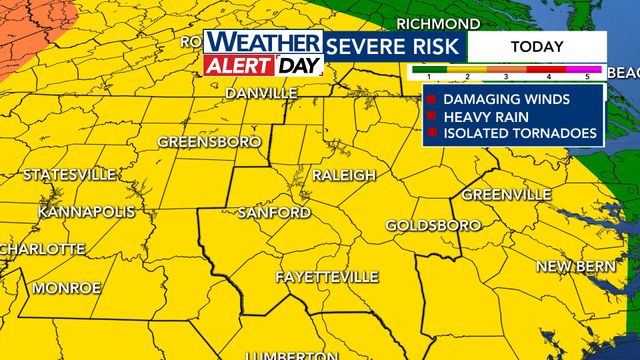Studies: Year-round workers need affordable housing to support tourism

The growth and demand for a coastal getaway comes at a cost for North Carolina – there is simply not enough affordable housing for those who support the tourism sector.
“With tourism growth seen in all 100 counties of North Carolina, we need to be mindful that these gains are being made while tourism workforce recovery continues to lag behind other sectors,” said Dr. Whitney Knollenberg, associate professor in the department of parks, recreation and tourism management at North Carolina State University.
Knollenberg researches ways to ease the strain on locals while finding sustainable solutions that support the tourist economy, and a public-private partnership supports some of her work.
The Lighthouse Fund for Sustainable Tourism is a partnership between North Carolina State University’s College of Natural Resources and Twiddy & Company, a vacation rental management company with more than 1,000 homes along the Outer Banks.
“Affordable housing for the tourism workforce members is a high priority,” Knollenberg said.
The first Lighthouse Fund-supported case studies, completed by Knollenberg with the support of two undergraduate research assistants, highlighted the importance of housing that is accessible for essential tourism workers. In the Outer Banks, two affordable housing projects that would support the local tourism workforce are proposed for Dare County, with Coastal Affordable Housing and Woda Cooper Companies.
Some area employers, such as Kitty Hawk Kites, provide full-time staff and interns with affordable housing. However, the supply continues to lag far behind demand.
For this upcoming season, one of CEO John Harris’ big focuses is on year-round manager housing.
“We’ve been offering housing for summer workers for a long time, but a major problem the last few years has been finding housing for year-round managers,” he said. “Building affordable housing units would take care of managers along with other necessary workers like teachers, firefighters and police officers. Right now, instead of investing in growing our business, we’re having to invest in housing for staff.”

Knollenberg also studies what other popular tourist destinations across the country, such as ski resorts and beach areas, are doing to tackle similar issues. After all, the lack of affordable housing for tourism workers isn’t isolated to the Outer Banks
In Gulf Shores, Alabama, another popular beach destination, the Gateway Initiative is an ambitious project that aims to address a shortage of about 14,000 tourism workers. According to Ed Bushaw, vice president of workforce development for the Gateway Initiative, the plan is to build an affordable housing campus with a childcare center and transportation hub on the mainland, bussing employees to work on the popular barrier islands. There is also a potential healthcare component to include a holistic approach to serving the needs of the hospitality workforce.
The approximately $372 million proposed project includes partnership Memorandums of Understanding (MOUs) with Coastal Alabama Community College, Auburn University (a land-grant university like NC State), and University of South Alabama for facilities and job training offered on-campus. Additionally, Gulf Regional Early Childhood Services (GRECs) has signed on to provide early childhood education training with the colleges.
"Having these college and university relationships means we can build a full work-to-learn environment for aspiring hospitality professionals,” notes Bushaw, who previously worked at Coastal Alabama Community College. “As we’ve seen our resident and tourist numbers grow, there are more boats than water in the summer, and we need to take care of both our workforce and our natural resources.
On the other side of the weather spectrum, University of New Hampshire and Colorado State University partnered with nonprofit Protect Our Winters and REI to research how climate change is affecting ski resort destinations. As the number of operating ski areas in the country has fallen by more than a third, and low snow years continue to pose a risk to local snow-dependent economies, the two universities have banded together to publish research showing the importance of the winter sports tourism industry.
What all these initiatives have in common is private companies partnering with public institutions. Why is this type of partnership so effective? To start, it encourages businesses to get involved in responsibly managing tourism and thinking further ahead. Furthermore, it leverages the varied resources and knowledge of private businesses with public institutions. And when combined with education, as with these examples, it offers a pipeline for the next generation to begin finding solutions to these problems.
“For the ongoing sustainability and viability of a destination, it is vital that partnerships exist with local tourism destination businesses and the Destination Marketing Organization (DMO),” said Currituck County Travel & Tourism Director Tameron Kugler. The organization is responsible for promoting tourism for a popular stretch of the northern Outer Banks, including the remote beaches where wild horses roam.
Kugler continued, “It is in the best interests of those companies who depend on tourism to proactively raise issues and concerns and to put into place programs, if possible, that assist in maintaining the health of a destination. It’s not just good for the planet, but it also makes good business sense.”
As businesses prepare for another record year of tourism growth, finding and implementing sustainable solutions becomes even more critical.
“Bringing together the resources of private organizations with the resources of universities means more knowledge to solve more challenges related to areas where the visitor economy is thriving,” commented Knollenberg. “This is the ‘Think and Do’ model of NC State in action – and the real-time problem solving that research should be about.”









